On the 4th of July 1867, Sam Clemens was 32 years old and had acquired the beginnings of a reputation and a career by becoming Mark Twain. He had embarked on a 5-month tour of Europe and the Holy Land with a contract to produce 50 letters for the Alta California in San Francisco and a few more for some newspapers in New York.
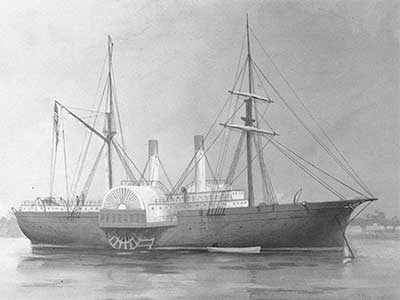 On that Independence Day 150 years ago the sidewheel steamer Quaker City arrived at Marseilles after brief visits to the Azores and Gibraltar, and the passengers went ashore to the Grand Hotel du Louvre et de la Paix to await the next day’s train to Paris.
On that Independence Day 150 years ago the sidewheel steamer Quaker City arrived at Marseilles after brief visits to the Azores and Gibraltar, and the passengers went ashore to the Grand Hotel du Louvre et de la Paix to await the next day’s train to Paris.
I decided to follow them.
I’m not the first to follow Sam around ParisPaula Harrington was a Fulbright scholar in Paris for six months, trying to figure out why “our most famous American writer came to loathe the place that so many other famous writers have loved.” Here’s her blog and here’s the book she’s since co-authored on the topic. I’ve tinkered modestly with the the text to fit it into this package; you can read ‘Innocents Abroad’ online here; the visit to Paris is in Chapter 02. |
There is an unfortunate scarcity of sidewheelers making the Atlantic crossing these days, so I made the first of many concessions to modern times by flying directly to Paris. In so doing I missed the chance to compare his unsatisfying experience on the French chemins de fer of the middle 1860s with today’s bullet trains that make the journey between Marseilles and Paris at 160 mph.
“It is hard to make railroading pleasant in any country,” he grumbled. “It is too tedious. Stagecoaching is infinitely more delightful.” He then launched into a song of praise about his stagecoach ride to Carson City six years before.
But it wasn’t Mark Twain who found the stagecoach ride so entrancing, it was Sam Clemens. That was in the summer of 1861 and Mark wasn’t unveiled (in the Territorial Enterprise) until February 1863, and It seems to me that on this visit to the brightest and liveliest city in Europe Sam was seeking adventures suited to Mark’s comic talent, and then handing him the pen. But sometimes, still so early in the game, the transition wasn’t quite perfect.
We’ll never know what Sam might have enjoyed on his own, but as Mark Twain he only liked two aspects of the train trip. He liked the conductor — “You are in the hands of officials who zealously study your welfare and your interest, instead of turning their talents to the invention of new methods of discommoding and snubbing you, as is very often the main employment of that exceedingly self-satisfied monarch, the railroad conductor of America” — and he liked the dinner stop at Dijon:
“But the happiest regulation in French railway government is — thirty minutes to dinner! No five-minute boltings of flabby rolls, muddy coffee, questionable eggs, gutta-percha beef, and pies whose conception and execution are a dark and bloody mystery to all save the cook that created them! No, we sat calmly down and poured out rich Burgundian wines and munched calmly through a long table d’hote bill of fare, snail patties, delicious fruits and all, then paid the trifle it cost and stepped happily aboard the train again, without once cursing the railroad company. A rare experience and one to be treasured forever.”
 Once in Paris Sam and his fellow travelers took a carriage to the Grand Hotel du Louvre on the rue de Rivoli. Fortunately for me, our considerably less Grand Squat is within a block of the rue de Rivoli (via the exquisitely long and narrow Rue du Prévôt) and something less than a mile from his hotel across the boulevard from the Louvre.
Once in Paris Sam and his fellow travelers took a carriage to the Grand Hotel du Louvre on the rue de Rivoli. Fortunately for me, our considerably less Grand Squat is within a block of the rue de Rivoli (via the exquisitely long and narrow Rue du Prévôt) and something less than a mile from his hotel across the boulevard from the Louvre.
I walked. And for all the changes that have transpired since his visit, a stroll along this teeming street is rich with interest: shops large and small in wild variety — my favorites for their names alone: ‘Come On Eileen’ and ‘See U Soon’.
One of the more interesting changes since 1867 is that the Hotel du Louvre is now a Hyatt, with an elevator installed in the stairwell of the massive structure.
“We secured rooms at the hotel, or rather, we had three beds put into one room, so that we might be together, and then we went out to a restaurant, just after lamplighting, and ate a comfortable, satisfactory, lingering dinner. It was a pleasure to eat where everything was so tidy, the food so well cooked, the waiters so polite, and the coming and departing company so moustached, so frisky, so affable, so fearfully and wonderfully Frenchy!”
The moustaches are in shorter supply nowadays, but the Frenchiness abounds.
“All the surroundings were gay and enlivening. Two hundred people sat at little tables on the sidewalk, sipping wine and coffee; the streets were thronged with light vehicles and with joyous pleasure-seekers; there was music in the air, life and action all about us, and a conflagration of gaslight everywhere!”
It is the same today except for the gaslight. The great difference between Paris and our American cities is the vibrant life on the streets. Restaurants aren’t behind closed doors, they spill out onto the sidewalks.
“After dinner we felt like seeing such Parisian specialties as we might see without distressing exertion, and so we sauntered through the brilliant streets and looked at the dainty trifles in variety stores and jewelry shops. Occasionally, merely for the pleasure of being cruel, we put unoffending Frenchmen on the rack with questions framed in the incomprehensible jargon of their native language, and while they writhed we impaled them, we peppered them, we scarified them, with their own vile verbs and participles.”
Follow our Friends on Facebook
I do this daily, with the same result.
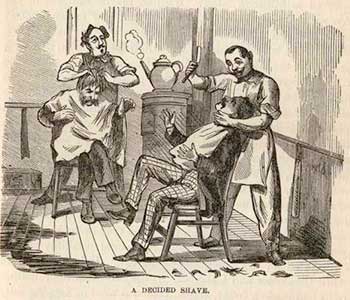 Wasn’t it Sam who struggled with French and Mark who wrote it up afterward?
Wasn’t it Sam who struggled with French and Mark who wrote it up afterward?
And then Sam sought out a barber, which turned out to be another trial for Mark Twain to write about. “The incipient assassin held a basin of water under my chin and slopped its contents over my face, and into my bosom, and down the back of my neck, with a mean pretense of washing away the soap and blood. He dried my features with a towel and was going to comb my hair, but I asked to be excused. I said, with withering irony, that it was sufficient to be skinned — I declined to be scalped.” Learning from his experience (and not having shaved for more than 50 years) I skipped this adventure.
Five Years Ago in the NevadaGramRobin went shopping, Shorty stayed in the room watching the Animal Channel, and I went over to Fallon‘s Oats Park Art Center where Lulo Reinhardt talked about his great-uncle Django and the music — now called Gypsy Jazz — that he made famous. Lulo lives in Germany, but his music derives from the Hot Club de France.
Django and Stephane Grapelli Les Doigts de L’Homme, “Medley Manouche” It’s a sound that has banjo all through it. Lulo Reinhardt’s Latin Swing Project, Mar y Sol. We met up with the others in our group for an early dinner at The Slanted Porch, another of Fallon’s great restaurants, and after a promenade with Shorty we went back to the Arts Center for the evening’s performance. As planned, we arrived an hour before the performance in order to meander through the galleries (major display: gas pumps from the early automotive era) and enjoy a refreshment at the Art Bar. And then the music began, and I blissed out. Rather than attempt to describe it, I’ve embedded videos of their performances above so you can enjoy them directly, and easily find more. Thank you, Fallon. |
I also skipped billiards, which was next on Sam’s agenda, and which Mark described: “The cushions were a good deal higher than the balls, and as the balls had a fashion of always stopping under the cushions, we accomplished very little in the way of caroms. The cushions were hard and unelastic, and the cues were so crooked that in making a shot you had to allow for the curve or you would infallibly put the ‘English’ on the wrong side of the hall.
“Dan was to mark while the doctor and I played. At the end of an hour neither of us had made a count, and so Dan was tired of keeping tally with nothing to tally, and we were heated and angry and disgusted. We paid the heavy bill—about six cents—and said we would call around sometime when we had a week to spend, and finish the game.”
“Of course we visited the renowned International Exposition. All the world did that. We went there on our third day in Paris—and we stayed there nearly two hours. That was our first and last visit.
“To tell the truth, we saw at a glance that one would have to spend weeks — yea, even months — in that monstrous establishment to get an intelligible idea of it. It was a wonderful show, but the moving masses of people of all nations we saw there were a still more wonderful show. I discovered that if I were to stay there a month, I should still find myself looking at the people instead of the inanimate objects on exhibition.”
Then they hurried to the Arc de l’Etoile where Napoleon III, Emperor of France and Abdul Aziz, Sultan of Turkey, were to review 25,000 troops.
“Presently there was a sound of distant music; in another minute a pillar of dust came moving slowly toward us; a moment more and then, with colors flying and a grand crash of military music, a gallant array of cavalrymen emerged from the dust and came down the street on a gentle trot. After them came a long line of artillery; then more cavalry, in splendid uniforms; and then their imperial majesties Napoleon III and Abdul Aziz. The vast concourse of people swung their hats and shouted — the windows and housetops in the wide vicinity burst into a snowstorm of waving handkerchiefs, and the wavers of the same mingled their cheers with those of the masses below. It was a stirring spectacle.
“But the two central figures claimed all my attention. Was ever such a contrast set up before a multitude till then?
“Napoleon in military uniform—a long-bodied, short-legged man, fiercely moustached, old, wrinkled, with eyes half closed, and such a deep, crafty, scheming expression about them!—Napoleon, bowing ever so gently to the loud plaudits, and watching everything and everybody with his cat eyes from under his depressed hat brim, as if to discover any sign that those cheers were not heartfelt and cordial.
“As for the Sultan, one could set a trap any where and catch a dozen abler men in a night.”
Ten Years Ago in the NevadaGramI was lucky enough to visit Tonopah at the height of that second boom. Back then there were a dozen mines working within 50 miles of the old city, and the Air Force was constructing a major facility for testing and perfecting the Stealth bomber, so the Air Force leased entire motels for their men. The population went from fewer than 2,500 to more than 4,000 in about a year, and very structure with a roof over it was rented. Every vacant lot that could accommodate a trailer was put to use, giving the tangle of old streets an incongruous look: a flamingo-pink aluminum cube stuck between a swaybacked old cottage on one side and a fitted stone mansion on the other.
Prime rental properties during the boom. At Coleman’s, the only grocery store in town, the clerks worked steadily to restock the shelves with almost 6 tons of groceries every day. The Mizpah Annex Cafe was a crush of men in Air Force fatigues or the flannel shirts and blue jeans of construction workers and miners. Waitresses raced from table to table with pots of coffee and platters of flapjacks. Fleets of buses hauled the men out of town to work — 900 of them were building the great new Anaconda molybdenum mine and mill, and hundreds more worked in a dozen gold and silver mines.
Construction workers at the Anaconda molybdenum mine had their own trailer park. The rattle of hammers and the snarl of saws was heard everywhere in town, and anything with a roof could rent for $300 a month. Local people marveled at the revival, but it wasn’t until there was an armed robbery in a Main Street parking lot that they acknowledged Tonopah had become a city again. |
This is the kindest thing he had to say about the Sultan. In fact I was somewhat discouraged to read Sam’s disparagement of the non-European people he met along the way. He knew about Napoleon III well enough — his story had been in all the papers. But what did he know about Abdul Aziz? Only what his appearance suggested apparently:
“Abdul Aziz, absolute lord of the Ottoman empire — clad in dark green European clothes, almost without ornament or insignia of rank; a red Turkish fez on his head; a short, stout, dark man, black-bearded, black-eyed, stupid, unprepossessing — a man whose whole appearance somehow suggested that if he only had a cleaver in his hand and a white apron on, one would not be at all surprised to hear him say: “A mutton roast today, or will you have a nice porterhouse steak?”
Today’s Wikipedia is better informed: “Apart from his passion for the Ottoman Navy, which had the world’s third largest fleet in 1875 (after the British and French navies), the Sultan took an interest in documenting the Ottoman Empire. He was also interested in literature and was a talented classical music composer. Some of his compositions, together with those of the other members of the Ottoman dynasty, have been collected in the album “European Music at the Ottoman Court” by the London Academy of Ottoman Court Music.”
“We went to see the Cathedral of Notre Dame. We had heard of it before. It surprises me sometimes to think how much we do know and how intelligent we are. . . .
“They say that a pagan temple stood where Notre Dame now stands . . . and that a Christian church took its place about A.D. 300; another took the place of that in A.D. 500; and that the foundations of the present cathedral were laid about A.D. 1100. The ground ought to be measurably sacred by this time, one would think. One portion of this noble old edifice is suggestive of the quaint fashions of ancient times. It was built by Jean Sans-Peur, Duke of Burgundy, to set his conscience at rest — he had assassinated the Duke of Orleans. Alas! Those good old times are gone when a murderer could wipe the stain from his name and soothe his troubles to sleep simply by getting out his bricks and mortar and building an addition to a church.”
Today the long line of visitors waiting to enter the famous place requires more patience than we had available and so we took his word about the rich stained-glass windows embellished with blue and yellow and crimson saints and martyrs, and the numberless great pictures in the chapels that he’d tried to admire.
“Next we went to visit the Morgue, that horrible receptacle for the dead who die mysteriously and leave the manner of their taking off a dismal secret. We stood before a grating and looked through into a room which was hung all about with the clothing of dead men; coarse blouses, water-soaked; the delicate garments of women and children; patrician vestments, hacked and stabbed and stained with red; a hat that was crushed and bloody.”
 “On a slanting stone lay a drowned man, naked, swollen, purple; clasping the fragment of a broken bush with a grip which death had so petrified that human strength could not unloose it — mute witness of the last despairing effort to save the life that was doomed beyond all help. A stream of water trickled ceaselessly over the hideous face. We knew that the body and the clothing were there for identification by friends, but still we wondered if anybody could love that repulsive object or grieve for its loss.”
“On a slanting stone lay a drowned man, naked, swollen, purple; clasping the fragment of a broken bush with a grip which death had so petrified that human strength could not unloose it — mute witness of the last despairing effort to save the life that was doomed beyond all help. A stream of water trickled ceaselessly over the hideous face. We knew that the body and the clothing were there for identification by friends, but still we wondered if anybody could love that repulsive object or grieve for its loss.”
Here was Mark Twain emerging more fully onto the page. He was dazzled by the splendid spectacle and the pageantry of the military procession, but here in the morgue he delved deeper and darker.
“We grew meditative and wondered if, some forty years ago, when the mother of that ghastly thing was dandling it upon her knee, and kissing it and petting it and displaying it with satisfied pride to the passers-by, a prophetic vision of this dread ending ever flitted through her brain. I half feared that the mother, or the wife or a brother of the dead man might come while we stood there, but nothing of the kind occurred. Men and women came, and some looked eagerly in and pressed their faces against the bars; others glanced carelessly at the body and turned away with a disappointed look—people, I thought, who live upon strong excitements and who attend the exhibitions of the Morgue regularly, just as other people go to see theatrical spectacles every night. When one of these looked in and passed on, I could not help thinking —
Fifteen Years Ago in the NevadaGramThe recent Governor’s Conference on Tourism focused on Nevada’s new slogan, “Bring It On”. Poster Boy for the new campaign (and speaker at the Tuesday luncheon) is Glen Plake, an extreme skier who goes right on over the edge. He grew up at South Lake Tahoe and resides today in the hills above Lake Lahontan, where he water skis and bounces down country roads between winters.You can get a copy of the Commission’s new Adventure guide “The Dirt” here. The effort to bring attention to Nevada’s uncrowded outdoor activities is being greeted warmly in rural Nevada. Folks there are gratified at getting recognition at last for their unique recreational resource: the 85% of the state that is public land. Accessible and user-friendly, this immense realm of almost-unspoiled landscapes is a national treasure of enormous value and can be a great economic resource for the state for generations — until the rest of the country gets uncrowded again. As if to emphasize this new direction for the state, Reno has been selected to host the ESPN Great Outdoor Games July 10-13,
Taking aim at the Outdoor Games 2003. The 2002 Games attracted 60,000 to Lake Placid NY, and were seen on TV. Events include archery, rifle and shotgun target shooting, bass and fly fishing, three sporting dog events and eight timber events, from Log Rolling to Tree Topping. ESPN, ESPN2 and ABC Sports will televise more than 19 hours from the Rancho Santa Fe Park, the Truckee River and other venues to be announced. More information here. |
“Now this don’t afford you any satisfaction — a party with his head shot off is what you need.”
Alas, the morgue is no longer open to public visitation, but there is a modern attraction that centers on the dead: the Catacombs. Unlike the morgue though, there isn’t any personal drama here. Among the vast collection of skulls and bones so artistically arranged, there’s no way to tell which one was Yorick.
The sightseeing continued with an antidote to the morgue — visits to the Jardin Mabile and a similar amusement park in the suburb of Asnieres where he saw “the famous Blondin” walk a tightrope:
“He balanced his pole and walked the length of his rope — two or three hundred feet; he came back and got a man and carried him across; he returned to the center and danced a jig; next he performed some gymnastic and balancing feats too perilous to afford a pleasant spectacle; and he finished by fastening to his person a thousand Roman candles, Catherine wheels, serpents and rockets of all manner of brilliant colors, setting them on fire all at once and walking and waltzing across his rope again in a blinding blaze of glory that lit up the garden and the people’s faces like a great conflagration at midnight.”
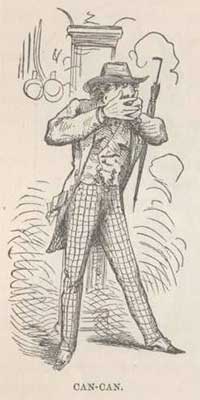 After the tightrope performance the party moved indoors, where there was “a drinking saloon, and all around it was a broad circular platform for the dancers. Twenty sets formed, the music struck up, and then —
After the tightrope performance the party moved indoors, where there was “a drinking saloon, and all around it was a broad circular platform for the dancers. Twenty sets formed, the music struck up, and then —
I placed my hands before my face for very shame. But I looked through my fingers.
They were dancing the renowned ‘Can-can.’
“That is the can-can. The idea of it is to dance as wildly, as noisily, as furiously as you can; expose yourself as much as possible if you are a woman; and kick as high as you can, no matter which sex you belong to . . . I suppose French morality is not of that straight-laced description which is shocked at trifles.
“I moved aside and took a general view of the can-can. Shouts, laughter, furious music, a bewildering chaos of darting and intermingling forms, stormy jerking and snatching of gay dresses, bobbing beads, flying arms, lightning flashes of white-stockinged calves and dainty slippers in the air, and then a grand final rush, riot, a terrific hubbub, and a wild stampede! Heavens!”
Can’t Get to Paris?
Robin and I attended a demonstration of this epic meal in the hallowed restaurant, and it was sensational. If you don’t mind being the center of attention, put this on your agenda and add a happy memory to your collection. |
Then the Louvre, which he didn’t care for. “We looked at its miles of paintings by the old masters. Some of them were beautiful, but at the same time they carried such evidences about them of the cringing spirit of those great men that we found small pleasure in examining them. . . . But I will drop the subject, lest I say something about the old masters that might as well be left unsaid.”
After that they visited the Bois de Boulogne, “that limitless park, with its forests, its lakes, its cascades, and its broad avenues. There were thousands upon thousands of vehicles abroad, and the scene was full of life and gaiety. There were . . . Dukes and Duchesses abroad, with gorgeous footmen perched behind, and equally gorgeous outriders perched on each of the six horses; there were blue and silver, and green and gold, and pink and black, and all sorts and descriptions of stunning and startling liveries out, and I almost yearned to be a flunkey myself, for the sake of the fine clothes.
“But presently the Emperor came along and he outshone them all. He was preceded by a bodyguard of gentlemen on horseback in showy uniforms, his carriage-horses (there appeared to be somewhere in the remote neighborhood of a thousand of them,) were bestridden by gallant-looking fellows, also in stylish uniforms, and after the carriage followed another detachment of bodyguards. Everybody got out of the way; everybody bowed to the Emperor and his friend the Sultan; and they went by on a swinging trot and disappeared.”
He delighted in the spectacle of the Emperor’s procession as much as he had deplored the paintings at the Louvre.
From there to Pere Lachaise, “the national burying-ground of France, the honored resting-place of some of her greatest and best children, the last home of scores of illustrious men and women who were born to no titles, but achieved fame by their own energy and their own genius.
Follow our Friends on Facebook
“This place is sacred to a nobler royalty — the royalty of heart and brain. Every faculty of mind, every noble trait of human nature, every high occupation which men engage in, seems represented by a famous name.” Today the famous names are more recent and more familiar: Balzac is there, and Chopin; Jim Morrison, Yves Montand, Edith Piaf, Simone Signoret, Gertrude Stein — it’s a long list, and at its head are Abelard and Heloise.
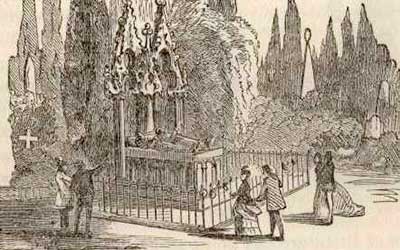 “Yet who really knows the story of Abelard and Heloise? Precious few people. The names are perfectly familiar to every body, and that is about all. With infinite pains I have acquired a knowledge of that history, and I propose to narrate it here, partly for the honest information of the public and partly to show that public that they have been wasting a good deal of marketable sentiment very unnecessarily.”
“Yet who really knows the story of Abelard and Heloise? Precious few people. The names are perfectly familiar to every body, and that is about all. With infinite pains I have acquired a knowledge of that history, and I propose to narrate it here, partly for the honest information of the public and partly to show that public that they have been wasting a good deal of marketable sentiment very unnecessarily.”
A long narrative of the story of the fabled lovers ensued, this passage earnestly written by Sam, not Mark.
Of Heloise he wrote, “I have not a word to say against the misused, faithful girl, and would not withhold from her grave a single one of those simple tributes which blighted youths and maidens offer to her memory. She was “pure-souled” and evinced a “noble, self-sacrificing love”. But Pierre Abelard was a “cold-hearted villain”, “unmanly” and “a dastardly seducer”.
After Sam told their story in detail with such evident sincerity, Mark went for a drink.
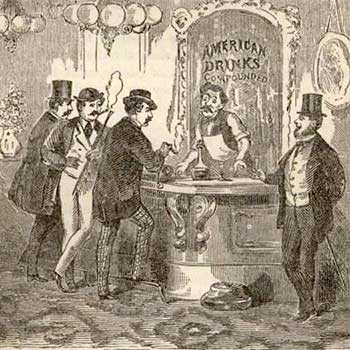 “We ferreted out another French imposition—a frequent sign to this effect: “ALL MANNER OF AMERICAN DRINKS ARTISTICALLY PREPARED HERE.” We procured the services of a gentleman experienced in the nomenclature of the American bar, and moved upon the works of one of these impostors. A bowing, aproned Frenchman skipped forward and said:
“We ferreted out another French imposition—a frequent sign to this effect: “ALL MANNER OF AMERICAN DRINKS ARTISTICALLY PREPARED HERE.” We procured the services of a gentleman experienced in the nomenclature of the American bar, and moved upon the works of one of these impostors. A bowing, aproned Frenchman skipped forward and said:
“‘Que voulez les messieurs?’
“Our general said, ‘We will take a whiskey straight.’
“[A stare from the Frenchman.]
“‘Well, if you don’t know what that is, give us a champagne cocktail.’
“[A stare and a shrug.]
“‘Well, then, give us a sherry cobbler.’
“The Frenchman was checkmated. This was all Greek to him.
“‘Give us a brandy smash!’
“The Frenchman began to back away, suspicious of the ominous vigor of the last order — began to back away, shrugging his shoulders and spreading his hands apologetically.
“The General followed him up and gained a complete victory. The uneducated foreigner could not even furnish a Santa Cruz Punch, an Eye-Opener, a Stone-Fence, or an Earthquake. It was plain that he was a wicked impostor.’
On their final day in Paris, the Quaker City passengers visited Versailles.
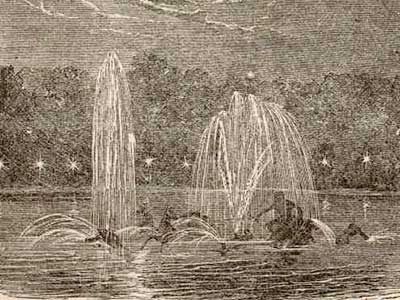 “VERSAILLES! It is wonderfully beautiful! You gaze and stare and try to understand that it is real, that it is on the earth, that it is not the Garden of Eden — but your brain grows giddy, stupefied by the world of beauty around you, and you half believe you are the dupe of an exquisite dream. The scene thrills one like military music! A noble palace, stretching its ornamented front, block upon block away, till it seemed that it would never end. . . .”
“VERSAILLES! It is wonderfully beautiful! You gaze and stare and try to understand that it is real, that it is on the earth, that it is not the Garden of Eden — but your brain grows giddy, stupefied by the world of beauty around you, and you half believe you are the dupe of an exquisite dream. The scene thrills one like military music! A noble palace, stretching its ornamented front, block upon block away, till it seemed that it would never end. . . .”
This is the only aspect of Paris that Mark — or was it Sam? — put in capital letters, and he went on and on about it, couldn’t say enough about its perfections (“vast fountains whose great bronze effigies discharged rivers of sparkling water into the air and mingled a hundred curving jets together in forms of matchless beauty”).
And then they got back on the train to Marseilles, went aboard the Quaker City and set off for Genoa.
Parting Shot —
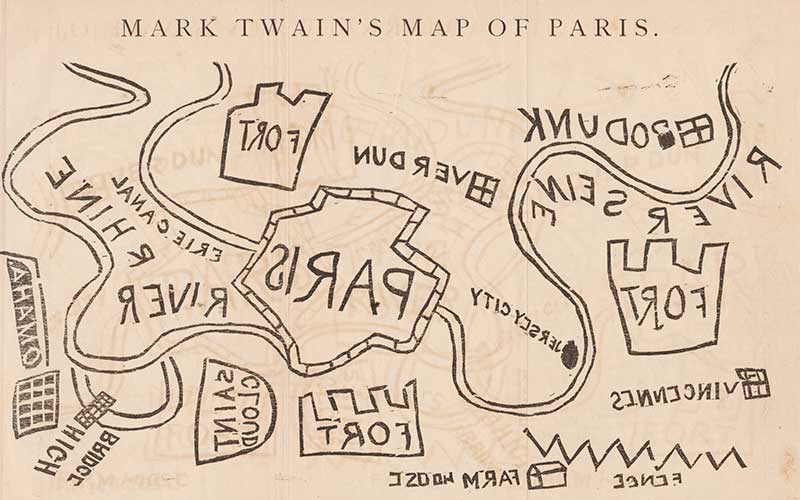



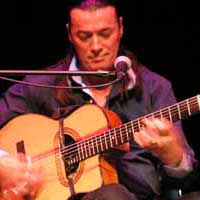 Lulo’s band was one of the three groups performing that evening in a program called “In the Footsteps of Django”, each inspired by Django’s music and each taking off with it in different directions. He and guitarist Olivier Kikteff of ‘Les Doigts de L’Homme’ spent an hour talking about Django, his music and theirs.
Lulo’s band was one of the three groups performing that evening in a program called “In the Footsteps of Django”, each inspired by Django’s music and each taking off with it in different directions. He and guitarist Olivier Kikteff of ‘Les Doigts de L’Homme’ spent an hour talking about Django, his music and theirs. —
— 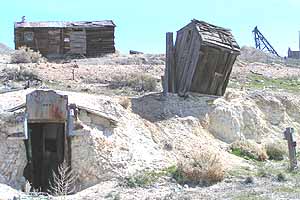
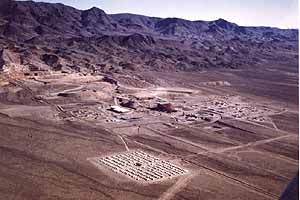
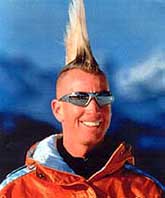 No, it’s not Governor Kenny Guinn, it’s Skier Glen Plake.
No, it’s not Governor Kenny Guinn, it’s Skier Glen Plake.
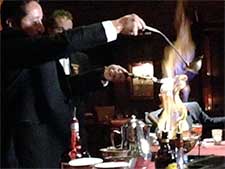 If, for some reason, you are unable to visit Paris soon, head for Lake Tahoe’s South Shore — not for a swim or a paddle, but for a birthday dinner: the Sage Room at Harveys is turning 70 and the party goes on for a year, in the form of a special prix fixe dinner ($70/person). I should add ‘unforgettable’ to the description because the meal is not merely served, it is hand-crafted at the table, a masterful performance involving an almost gymnastic combination of culinary sculpture and fire.
If, for some reason, you are unable to visit Paris soon, head for Lake Tahoe’s South Shore — not for a swim or a paddle, but for a birthday dinner: the Sage Room at Harveys is turning 70 and the party goes on for a year, in the form of a special prix fixe dinner ($70/person). I should add ‘unforgettable’ to the description because the meal is not merely served, it is hand-crafted at the table, a masterful performance involving an almost gymnastic combination of culinary sculpture and fire.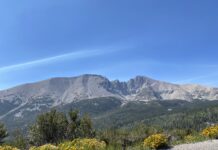
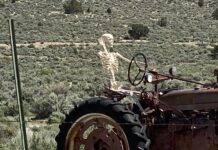
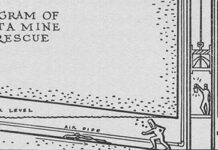
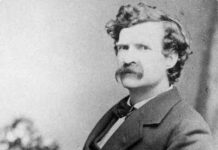
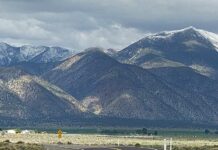
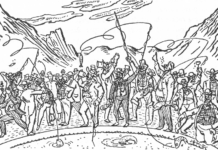






David,
Your sesquicentennial salute to
Mark Twain in Paris would make
Samuel blush with pride…
“When using that language
I have never been mistaken for a Frenchman,
except, perhaps, by horses.”